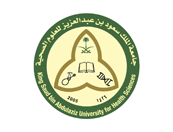Abstract
Purpose. To investigate how well at an early stage, based on pre- and post-enrolment data, students could be identified who become successful and unsuccessful in the first year at the university.
Method. Based on pre-and post-enrolment data, 24,976 students of the cohorts 2009-2015 were divided in subgroups. For each subgroup the percentage of successful, delayed, and unsuccessful students at the end of the first year was determined.
Results. Based on only the pre-enrolment data, i.e. sex, ethnic background, and type and level of achievement during the final examinations of pre-university education, on the one hand subgroups of students with a 74-82% success rate and a 5-10% dropout rate could be identified. On the other hand, subgroups with only a ≤ 35% success rate and an almost 50% dropout rate. By adding post-enrolment data, i.e. the achievement of students at the first two exams in the university, subgroups with a ≥ 90% success rate and a ≤ 5% dropout rate could be identified, and subgroups with only a ≤ 10% success rate and a ≥ 70% dropout rate.
Discussion. It is possible to identify successful and unsuccessful students at a very early stage. The challenge for the future is to investigate what appropriate interventions can be developed for (a) students who already before the start of their academic career or very early after the start at the university have a high chance of becoming unsuccessful and for (b) those who have a high chance of becoming successful
Recommended Citation
Baars, Gerard J.A.; Schmidt, Henk G.; and Hermus, Peter
(2022)
"Early Identification of Successful and Unsuccessful Students in the First Year at the University,"
Health Professions Education: Vol. 8:
Iss.
1, Article 4.
DOI: 10.55890/2452-3011.1016
Available at:
https://hpe.researchcommons.org/journal/vol8/iss1/4



